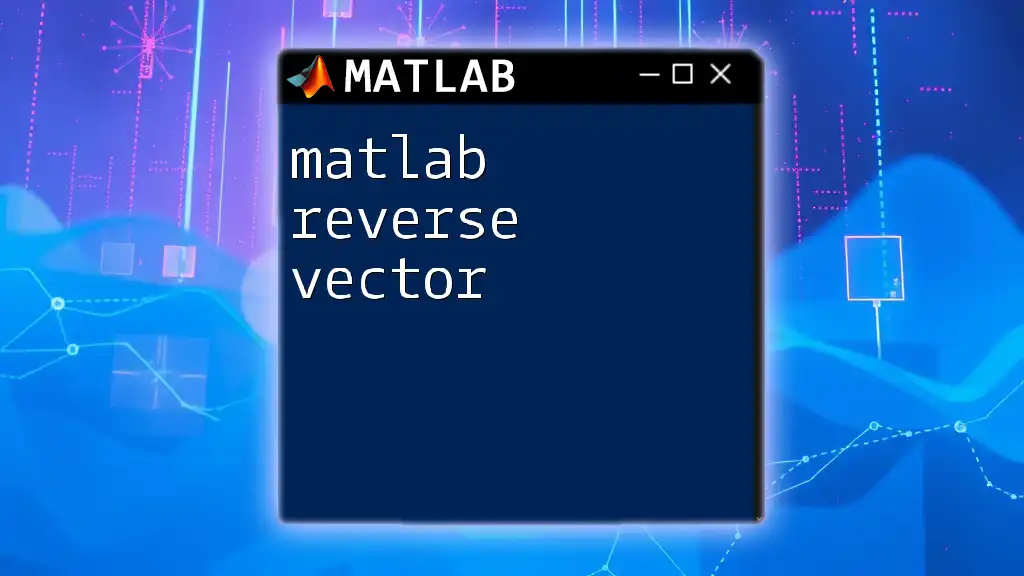The MATLAB `atan` function computes the inverse tangent (arctangent) of a given input, returning the angle in radians.
Here's a code snippet to demonstrate its usage:
angle = atan(1); % Returns the angle whose tangent is 1, which is π/4 radians
Understanding the Inverse Tangent Function
What is Inverse Tangent?
The inverse tangent, often denoted as arctan or atan, is a mathematical function that helps to determine the angle whose tangent is a given number. In simpler terms, if you know the value of the tangent of an angle, the inverse tangent function will provide you with the angle itself. The mathematical representation for inverse tangent is:
$$ y = \tan^{-1}(x) $$
This means that if \( y = \tan^{-1}(x) \), then \( x = \tan(y) \).
Importance of Inverse Tangent in Mathematics
Inverse tangent plays a fundamental role in various branches of mathematics, particularly in trigonometry, geometry, and calculus. It serves as a bridge between geometry and algebra, allowing one to solve for angles in right triangles and various real-world problems. For instance, when given the lengths of the opposite and adjacent sides in a right triangle, one can use inverse tangent to find the angle of inclination.

Working with Inverse Tangent in MATLAB
Introduction to the `atan` Function
In MATLAB, the `atan` function is utilized to compute the inverse tangent of a number. The syntax is straightforward:
Y = atan(X)
Where `X` is the input value or array for which you want to determine the inverse tangent and `Y` is the output angle in radians.
How To Use `atan` in MATLAB
Basic Usage
To compute the inverse tangent of a single value, simply assign the value to a variable and call the `atan` function. For example, if you want to find the inverse tangent of 1:
x = 1;
y = atan(x);
disp(y);
This will display the result, which is \( \frac{\pi}{4} \) radians, or approximately 0.7854.
Array Inputs
The `atan` function also efficiently handles arrays and matrices. You can find the inverse tangent of multiple values simultaneously. For example, consider the following code:
x = [0, 1, -1, 2];
y = atan(x);
disp(y);
This will return an array of angles corresponding to each input value, showcasing how `atan` can handle vectorized operations seamlessly.
Visualizing the Inverse Tangent Function
Plotting the Function
Visual representation oftentimes aids in understanding mathematical functions better. You can utilize the `fplot` function in MATLAB to visualize the inverse tangent function across a defined range. Here's an example to plot `atan` from -5 to 5:
fplot(@atan, [-5, 5]);
title('Plot of the Inverse Tangent Function');
xlabel('x');
ylabel('atan(x)');
grid on;
The resulting graph will illustrate how the inverse tangent behaves, revealing that it approaches \( -\frac{\pi}{2} \) as \( x \) approaches negative infinity and \( \frac{\pi}{2} \) as \( x \) approaches positive infinity.
Handling Inverse Tangent in Complex Numbers
MATLAB allows for the application of the `atan` function to complex numbers as well. This feature is particularly valuable in advanced engineering and complex analysis applications. The syntax remains the same. For example, using a complex number \( z = 1 + 1i \):
z = 1 + 1i;
w = atan(z);
disp(w);
This will provide the inverse tangent result formatted for the complex plane, showcasing MATLAB's powerful numerical capabilities.

Related Functions and Alternatives
The `atan2` Function
Another related function in MATLAB is `atan2`, which computes the inverse tangent considering both the x (adjacent) and y (opposite) coordinates. This variant is particularly useful for determining the correct quadrant of the angle. The syntax is:
Y = atan2(Y, X)
For instance, to compute an angle from its respective coordinates:
y = 1;
x = 1;
angle = atan2(y, x);
disp(angle);
This returns \( \frac{\pi}{4} \) radians, accounting for the positions of the coordinates effectively, which is crucial in situations where only `atan` would yield ambiguous results.
Comparing `atan` and `atan2`
| Function | Input | Output | Use Cases |
|---|---|---|---|
| `atan` | Single value | Angle in radians | Simple cases when the quadrant is known |
| `atan2` | Y and X coordinates | Angle in radians | Situations requiring full angle quadrant awareness |

Common Uses of Inverse Tangent in Programming
Example Applications in Mathematics
One common application of the inverse tangent is in solving for angles in right-angled triangles. Suppose you have a triangle with an opposite side length of 3 and an adjacent side length of 4. You can find the angle as follows:
opposite = 3;
adjacent = 4;
angle_rad = atan(opposite / adjacent);
disp(angle_rad); % This will give you the angle in radians
Example Applications in Engineering and Physics
Inverse tangent is frequently utilized in fields like engineering and physics. For instance, in mechanics, it can help find the angle of a force applied to an object when the horizontal and vertical components of the force are known. This would allow engineers to design structures or determine force orientations effectively.

Troubleshooting Common Errors
Common Mistakes
When using the `atan` function, some common errors include misinterpreting the output, especially regarding radians vs. degrees. It's crucial to be aware that the `atan` function returns angles in radians. Additionally, inputting non-numeric data will lead to errors, so ensuring the data type is correct is essential.
Debugging Tips
If you encounter issues, consider using the following tips to troubleshoot:
- Always verify that inputs are valid numbers.
- Use the `disp` function to print intermediate values in your calculations.
- Consult the MATLAB documentation for clarification on function descriptions, syntax, and examples.

Conclusion
Understanding the MATLAB inverse tan function is crucial for anyone looking to grasp mathematical programming within the tool. The `atan` function, along with its variations, provides programmers with the ability to calculate angles, interpret data, and visualize results effectively. By practicing with the examples provided in this guide, you will gain proficiency in utilizing `atan` and enhance your skillset in MATLAB.

Additional Resources
To deepen your understanding and continue learning about MATLAB's rich set of mathematical functions, consider exploring the official MATLAB documentation, engaging with online courses, or participating in forums dedicated to MATLAB programming.

Call to Action
Join our upcoming classes and tutorials to master MATLAB commands quickly and effectively. Enhance your programming skills and transform your understanding of mathematical functions today!

















